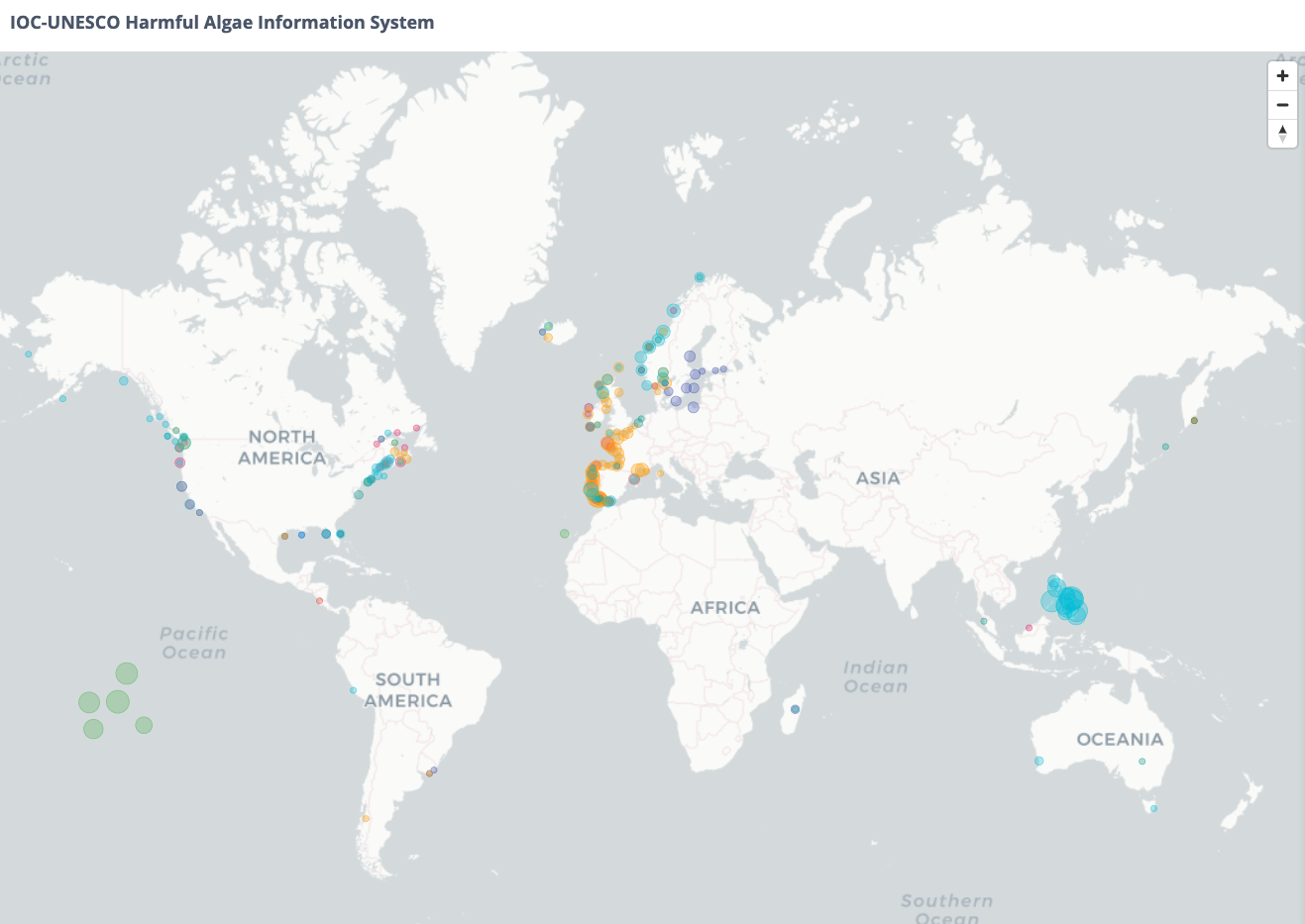Global Distribution of HABs
Several decades ago relatively few countries appeared to be affected by HABs, but now most coastal countries are threatened, in many cases over large geographic areas and by more than one harmful or toxic species. Many countries are faced with an array of toxic or harmful species and impacts, as well as disturbing trends of increasing incidence and geographic expansion of blooms, increased impacts to fisheries resources, and higher economic losses. The causes behind this expansion are debated, with possible explanations ranging from natural mechanisms of species dispersal to a host of human-related phenomena such as pollution and climatic shifts.
Whatever the mechanisms, coastal regions throughout the world are now subject to an unprecedented diversity and frequency of HAB events. The global expansion of HAB phenomena is also in part a reflection of improved monitoring and detection capabilities. However, the fact that part of the expansion is attributable to improved scientific capabilities should not temper our concern. The involvement of human activities in the HAB expansion suggests that policy decisions leading to bloom mitigation are needed at several levels, but sound scientific evidence is needed to justify these actions. Studies of human influences are ongoing in many areas, but are in their early stages of investigation.

Make your own world map!
IOC-UNESCO Harmful Algae Information System
The Harmful Algal Information System (HAIS) website allows users to generate their own maps of harmful algal (HA) events throughout the world. Users may select different layers for specific HAB events over a particular timeframe and geographic area of interest. A custom map can be configured by selecting a particular HAB syndrome and/or by selecting affected ecosystem components (e.g., humans, fish, marine mammals etc.), or the event nature (e.g., water discoloration, mass mortalities, etc.). Graphs are generated for each layer showing the number of incidences that have occurred. The site comprises:
- Information on harmful algal events
- Harmful algae monitoring and management systems worldwide
- Current use of taxonomic names of harmful algae
- Information on biogeography of harmful algal species
Supplementary components will include an expert directory and a bibliography.
Click on the below map to access HAIS!
The HAIS System is currently being developed within the "International Oceanographic Data and Information Exchange" (IODE) of the "Intergovernmental Oceanographic Commission" (IOC) of UNESCO, and in cooperation with WoRMS, ICES, PICES, IAEA and ISSHA.

